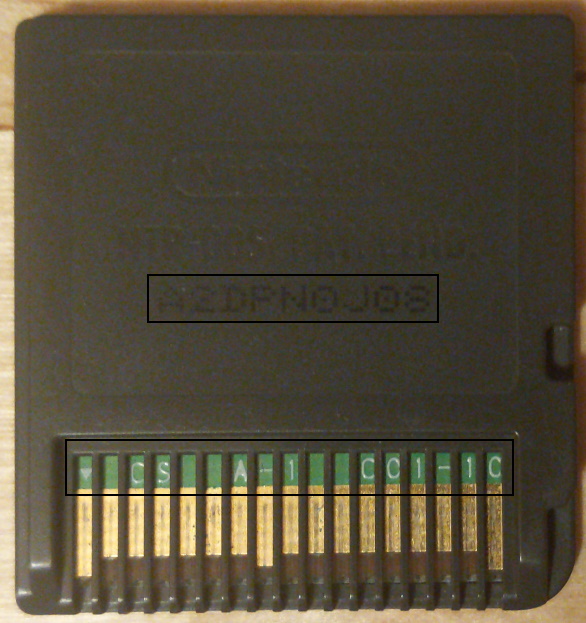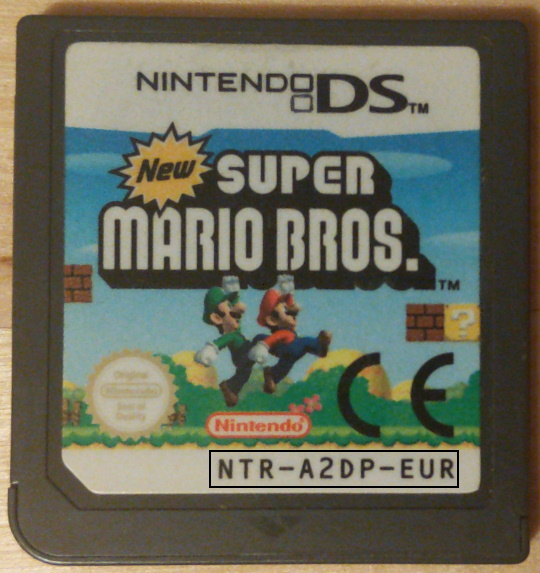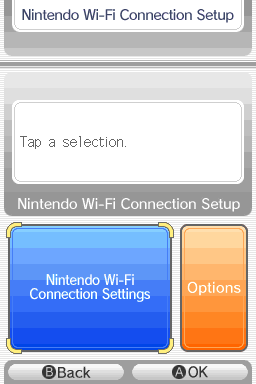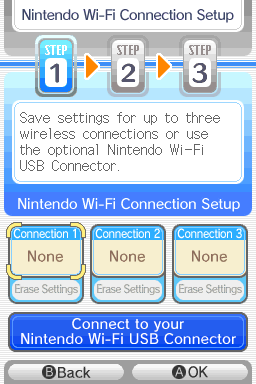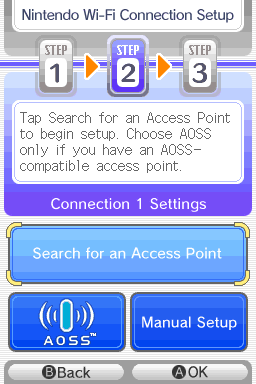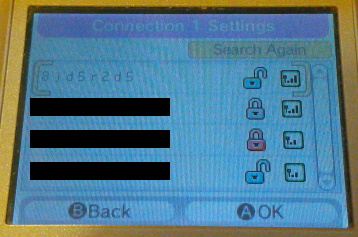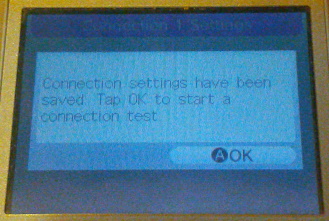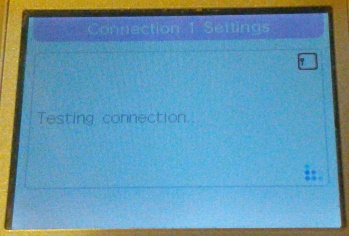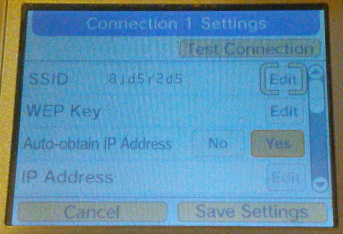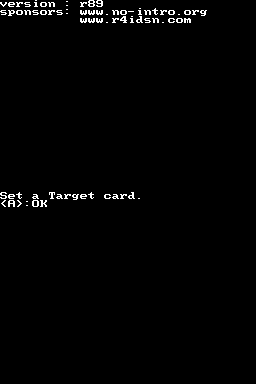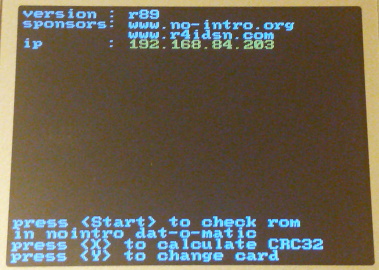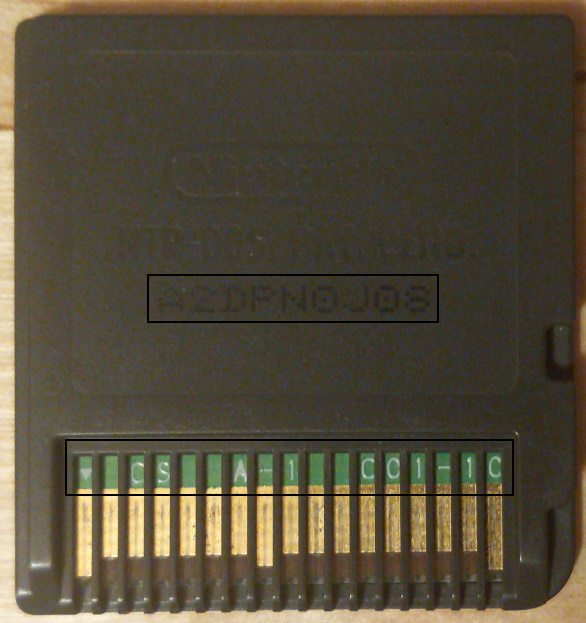This is an old revision of the document!
Nintendo DS / Nintendo DSi
Check the dumping hardware overview for a list of known preservation hardware.
If you need help, please come chat with us on the VGPC or No-Intro discord servers.
Introduction
Important Notes
- Unopened games should have their ROM and save data dumped before attempting to play them. This avoids inadvertent modification of the data and helps preserve any possible rewritable data in its unused/“factory” state. This is especially important for types of cart that store the ROM on rewritable media, or games that come with special save data pre-installed. But it is not necessarily possible to know in advance, hence why its advisable to dump first. Note in your submission whether the physical media was sealed and include a photo of the cart/packaging in its sealed state, if possible.
- You should clean the physical media's electrical contacts before trying to dump it, then dump it, and if it doesn't match something in the database, clean it again and dump it a second time, checking if both dumps match using a file comparison tool or calculating the SHA256 of each file and comparing those values. This helps ensure that dirt on the contacts is not causing interference, and that dirt was fully removed during the cleaning process.
- Especially for rare items, make sure to keep the media and dumping hardware around as long as possible (and keep in contact with any future owner if possible), in case an issue with the dump comes up. At minimum (again, if possible) its good idea to keep it around for a while after its been added to the database.
Dumping DS and DSi carts is reasonably easy if you have a 3DS or DSi, but is more involved if you only have a DS available.
Methods
Method 1 - 3DS console
Tools
- A Nintendo 3DS (including New 3DS/2DS/New 2DS) with a method to run “bare-metal” ARM9 software. Methods include having a custom firmware installed or using a DS flashcart with ntrboothax.
- SD card
- GodMode9 (v2.0.0 or later)
Dumping
- Turn off the console
- Insert the game
- Boot your console into GodMode9
- Navigate into “GAMECART”
- Copy the .nds.enc file and the .txt file to the SD card.
Method 2 - DSi console
Follow the instructions over at DSi CFW Guide for more details on how to get your handheld ready to handle homebrew, and make sure the latest stable GodMode9i is installed on your SD card.
Dumping
- Launch GodMode9i by using TWiLight Menu++.
- Navigate to NDS GAMECARD, press A.
- You'll see the following menu:
Dump NDS card ROM to "s:/gm9i/out"? (<A> yes, <Y> trim, <B> no, <X> save only)
- Press A to dump the cart to your SD card.
- Once it's finished, you can turn off the console and copy the files to your computer from the gm9i/out folder on your SD card.
Method 3 - DS console via Wi-Fi
Using the Wi-Fi version of the wooddumper homebrew, you can dump DS carts over FTP using a DS or DS Lite.
Requirements:
- DS or DS Lite console
- A way to run homebrew (if you don't have a flashcart, you can run homebrew using Download Play if you have certain hardware)
- Wi-Fi connection that can be set to WEP security or unsecured
- PC/smartphone/tablet that can connect to said network
- FTP client software on said PC/smartphone/tablet (you can often use the built-in browser or file manager by entering the IP address and prefixing it with
ftp://).
Wi-Fi Setup
- Create a WEP or unsecured hotspot using your router, smartphone/tablet or PC. There's no need to have it connected to the internet.
- Make sure you have a device connected to the hotspot. There's no need for this to be connected to the internet via another connection either.
- Use a Wi-Fi-enabled DS game (or this free Nintendo Channel demo) to setup the Wi-Fi connection on your DS. It'll say that the Nintendo Wi-Fi Connection service is discontinued, but this doesn't matter, as we don't need Nintendo's online service or any internet. If the auto-setup (“Search for an Access Point”) option doesn't work, try the manual one.
Dumping
- Run wooddumper.
- Follow the on-screen instructions regarding inserting you cart.
- Open the on-screen ip address in your FTP client.
- Copy the .nds and .txt file to your computer.
Method 4 - DS console via slot-2 flashcart
Tools
- A Nintendo DS or Nintendo DS Lite with a slot-1 flashcart
- A slot-2 flashcart compatible with your slot-1 flashcart.
Dumping
- Run wooddumper
- Follow the on-screen instructions regarding inserting the cart
- Insert your slot-2 flashcarts SD card to your PC's SD card reader / connect your slot-2 flashcart to your PC
- Copy the .nds and .txt files to your PC.
Gallery
Below are examples of txt files generated by wooddumper. The second one includes CRC32 as the wooddumper's checksum was used for that session.
- A2DPv00.txt
wooddumper r89 rom: code: A2DPv00 size: 33554432 bytes card: 00001fc2 save: status: 00000000 id: 00ffffff
- A2DPv00 (1).txt
wooddumper r89 rom: code: A2DPv00 size: 33554432 bytes card: 00001fc2 crc32: f443f9bf save: status: 00000000 id: 00ffffff
Identifying Game Versions
todo: add info on box serials (and non-standard carts if relevant)
Front of cart serial
SSS-CCCC-RRR
e.g. NTR-A2DP-EUR
S = System (NTR = DS, TWL = DSi-exclusive/DSi-enhanced)
C = Gamecode (see the first four characters in the “back of cart serial” section, although sometimes the gamecode here is incorrect and won't match that)
R = Region
Region Codes:
| Region | Region Code |
|---|---|
| Japan | JPN |
| USA | USA |
| Canada | CAN |
| Europe | EUR |
| United Kingdom | UKV |
| France | FRA |
| Korea | KOR |
Back of cart serial
TGGRUVXMM
e.g. A2DPN0J08
T = Type (A/B/C = Normal, D = DSi-exclusive, DS/DSi-enhanced with infrared hardware, T = Unknown, U = Tool/Utility, V = DSi-enhanced, Y = Unknown)
GG = Game code (e.g. 2D = New Super Mario Bros.)
R = Region (J = Japan, E = USA, P = Europe, K = Korea)
U = Unknown (“N” in all known cases)
V = Version (starts at 0)
X = Unknown (“J” in all known cases)
M = Production site/factory ID?
Easy way to remember where the version number is: fourth character from the right - this works for 3DS carts too.
PCB serial
Meaning is unknown
e.g. ▼ CS A-1 C01-10
sometimes a dot character (•) is used
ROM chip serial (first line)
XYYWW…
X = Unknown
Y = Manufacturing year?
W = Manufacturing week?

